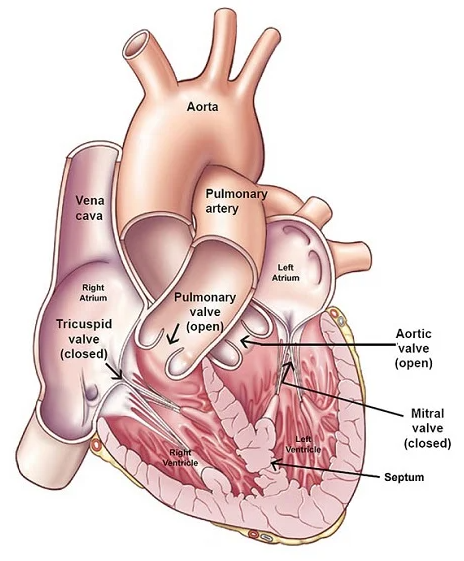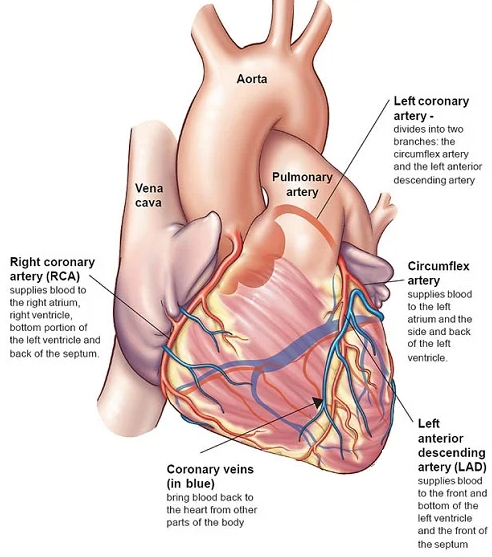The heart is a fist-sized organ that pumps blood throughout your body. It’s the primary organ of our circulatory system. Our heart contains four main sections (chambers) made of muscle and powered by electrical impulses.
The human heart is the most crucial organ of the human body. It pumps blood from the heart to different body parts and back to the heart. The most common heart attack symptoms or warning signs are chest pain, breathlessness, nausea, sweating etc.

- The heart is made up of four chambers:
- The upper two chambers of the heart are called auricles.
- The lower two chambers of the heart are called ventricles.
- The heart wall is made up of three layers:
- The outer layer of the heart wall is called the epicardium.
- The middle layer of the heart wall is called the myocardium.
- The inner layer of the heart wall is called the endocardium.
- The heart consists of four valves:
- The aortic valve prevents blood’s backflow when pumped from the left ventricle to the aorta.
- The mitral valve prevents the backflow of blood when pumped from the left atrium to the left ventricle.
- The pulmonary valve prevents the backflow of blood when it flows from the right ventricle to the pulmonary artery.
- The tricuspid valve prevents blood’s backflow when pumped from the right atrium to the right ventricle.
- The arteries carry the blood rich in oxygen from the heart to different parts of the body. The pulmonary artery, being an exception, carries deoxygenated blood to the lungs for purification.
- The veins carry impure blood from different body parts to the heart for oxygenation. However, the pulmonary vein has oxygenated blood to the heart.
Inside of the Heart

Outside of the Heart

Click to rate this post!
[Total: 1 Average: 5]
